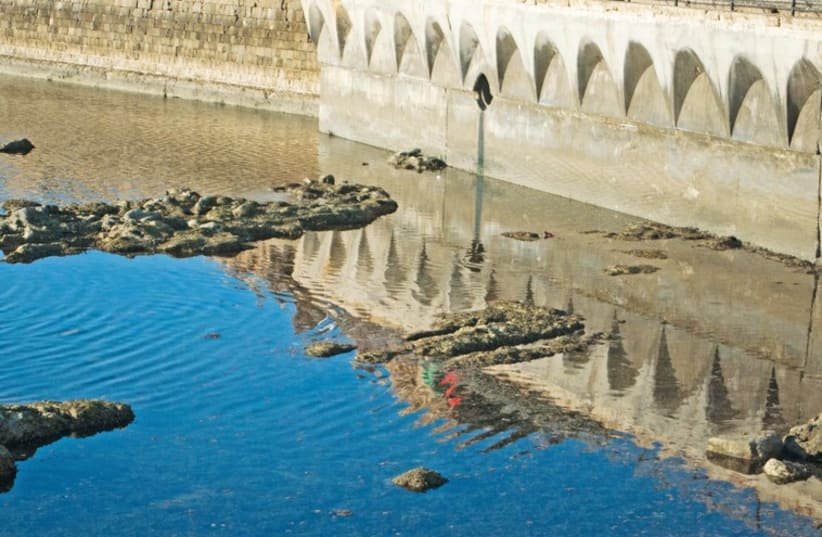See the latest opinion pieces on our page
One of the first stops of the trip was the headquarters of Mish’ol Akko, an organization that provides social and recreational activities to improve coexistence between Jewish and Arab citizens (respectively two-thirds and one third of the population, which is estimated to be around 52,000 citizens.) “Last summer, we organized a series of meetings to learn each other’s language – the Jews would study Arabic and the Arabs would study Hebrew,” said Shira Levy, 30, coordinator of Acre’s Kibbutz Mechanchim. When the war with Gaza broke out, the meetings persisted.“We transitioned from studying the languages to discussing the ongoing situation and reading the media from both sides.”Acre pulled through the war very well, stated Levy.The coexistence – which some prefer to call “partnership,” – however, is not always easy.In 2008, the neighborhood of Burla was a hotbed of clashes between the two groups of citizens. On the night of Yom Kippur – the holiest day on the Jewish calendar, that requires a full day of fasting and prayer – a young Arab man drove his car around the neighborhood blasting loud music from the speakers and (lightly) collided with a Jewish girl.A group of Jewish people responded aggressively, and approximately 300 Arabs came from the Old City to vandalize the neighborhood.Weeks later, when social order was re-established, the municipality decided to make changes to the neighborhood that would prevent such clashes from happening again.“We understood that the problem was not just the Israeli-Palestinian conflict, but mainly the socioeconomic issues of the local population,” said Roni Meara, a tour guide who resides in Acre.The students later met with the deputy mayors of the city, Ze’ev Neumann and Adham Jamal, in the municipality.Last October, Yom Kippur coincided with the Muslim Festival of the Sacrifice (Id al-Adha.) While the Jewish citizens of Acre were preparing for a day of fasting, the Muslim citizens were readying for a day of banqueting and celebration. For the municipality, the opposite traditions seemed bound to be a source of new clashes.“We expected the worst”, said Chief Rabbi Yosef Yashar. “Chief Imam Samir Asi and I visited all the schools of the city to explain what the two religious holidays were about, what they meant.”The religious leaders decided to combat violence by combating ignorance.In the end, nothing happened.Both religious groups were able to peacefully observe their respective traditions. Acre has become an example of coexistence for many other places, stated Yashar.“Here we don’t talk. We act.”“I believe we manage to live together in Acre not because we have to, but because we want to,” said Jamal, 42, who claimed to be part of both the Palestinian people and the Israeli country.In the afternoon, the Bar-Ilan students had a tour of the Old City, and later attended a series of panels at the Tourism Center. While walking around the market, they spotted several Brazilian flags hanging from the houses’ balconies. The guide explained that “Jews may speak Hebrew and Arabs Arabic, but they all speak soccer,” referring to the enthusiasm for the World Cup.At the joint Arab-Jewish Tourism Project Center, the international leader of the Bahai community spoke, stressing that the value of unity that is typical of the Bahai religion could potentially be the key to reach a more peaceful situation in the Middle-East.The successful partnership among different ethnicities and religions appears to be a result of the strong ties between each group’s leaders, as well as an effort to educate the youth to be respectful and knowledgeable.Saba Said, in charge of Arab education as part of the City, spoke to the students about the efforts of the municipality to create solid bases of coexistence starting from the earliest stages of education.“The study of Arabic in the Jewish schools has become very common,” she said. “Life in Israel for the Arab citizens is filled with interior conflicts, however here in Acre we manage to keep them outside.” The educator added that several partnership programs are being initiated in schools and kindergartens.“We work hard,” she concluded.“Sometimes we succeed, sometimes we don’t, but we keep going on.”Such remarks were further echoed by Yehuda Wyskin who is in charge of intercultural community activities and reflected that “Acre’s success is the sum of many acts undertaken by many individuals in both the Jewish and Arab communities.”Simone Somekh, 20, is a student at Bar-Ilan University and works as a freelance writer. His works have been published in The Jerusalem Post, The Times of Israel, Corriere della Sera and Pagine Ebraiche.Yoseff Shachor, 24, resides in Jerusalem while studying at Bar-Ilan University for his BA in communications and political science.
A recipe for coexistence
